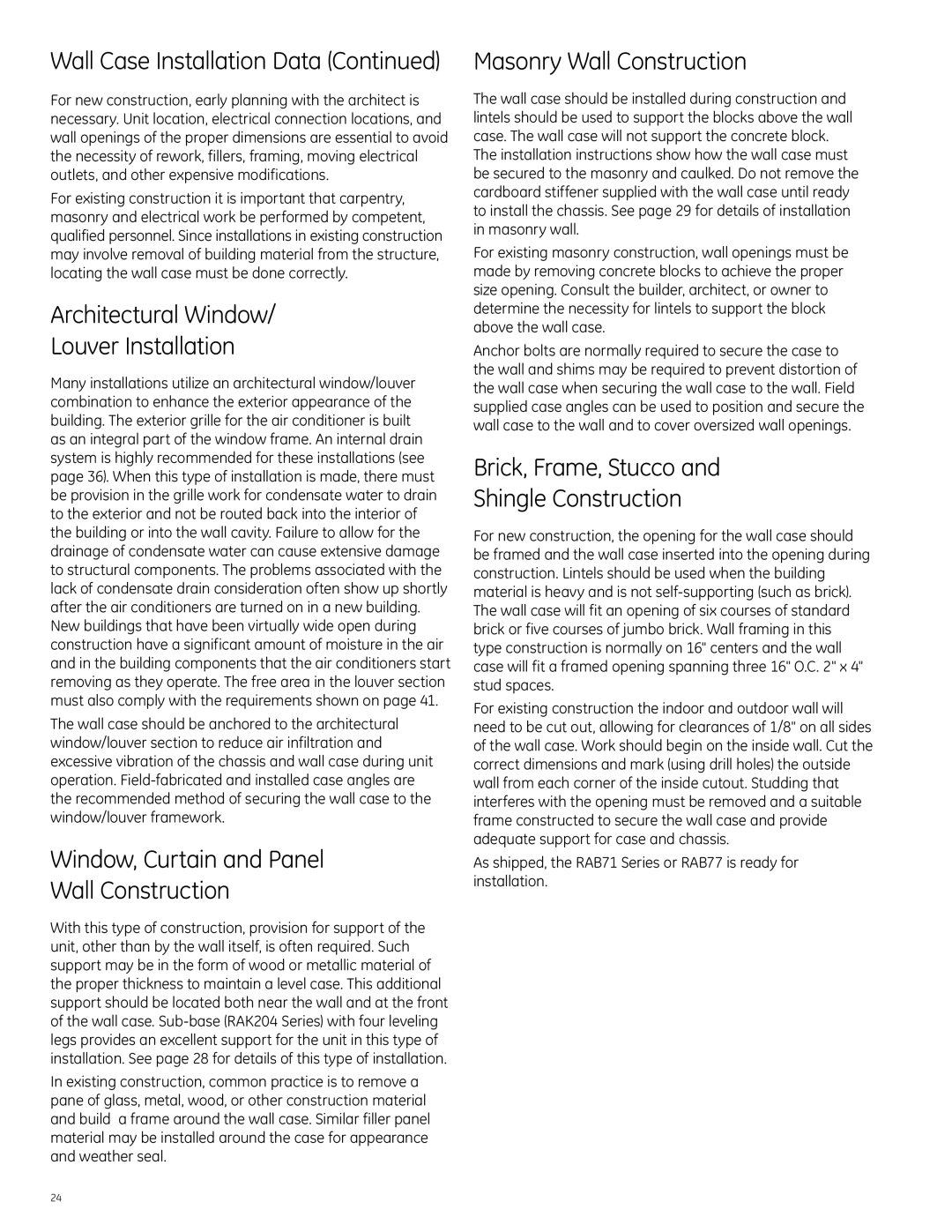3900 Series, 2900 Series, 5800 Series specifications
The GE Monogram series is renowned for its commitment to excellence in kitchen appliances, offering high-end features, superior technology, and outstanding performance. Among the extensive lineup, the 3900 Series, 2900 Series, and 5800 Series stand out for their innovative designs and multifunctionality.The GE Monogram 3900 Series is a flagship line that combines luxury with practicality. It features stainless steel construction for durability and elegance, along with a commercial-grade appearance that enhances any kitchen setting. One of its key characteristics is the advanced convection cooking technology, which ensures even heat distribution for perfectly cooked dishes. This series often includes options like dual-fuel ranges that provide the precision of a gas cooktop and the reliable performance of an electric oven. Smart technology integration allows users to control their appliances remotely, making meal preparation more convenient.
The 2900 Series presents a compelling option for those seeking high performance in a more compact form factor. This series is characterized by its sleek design and versatile capabilities, making it ideal for urban homes or smaller kitchens. The ovens typically feature multiple cooking modes, including a self-cleaning function and steam cooking options, which preserve nutrients in food while ensuring moist results. Energy efficiency is a priority in this series, with many units designed to reduce consumption without sacrificing power or performance.
On the other hand, the GE Monogram 5800 Series is designed for those who desire the pinnacle of culinary technology. With features like a dual-fuel convection oven and integrated temperature probes, home chefs can achieve restaurant-quality results. The 5800 Series boasts a variety of customizable settings that enable precision cooking, while the built-in smart technologies provide remote monitoring and alerts. The design integrates seamlessly with contemporary kitchens, featuring intuitive touch controls and high-quality finishes that reflect sophistication.
Each of these series embodies GE’s commitment to crafting appliances that inspire both culinary creativity and efficient cooking. With the Monogram brand, customers enjoy a blend of elegance, performance, and smart technology that makes preparing meals an effortless and enjoyable experience. Whether you choose the 3900, 2900, or 5800 Series, you’re investing in an appliance that brings professional-grade quality to your home kitchen.
